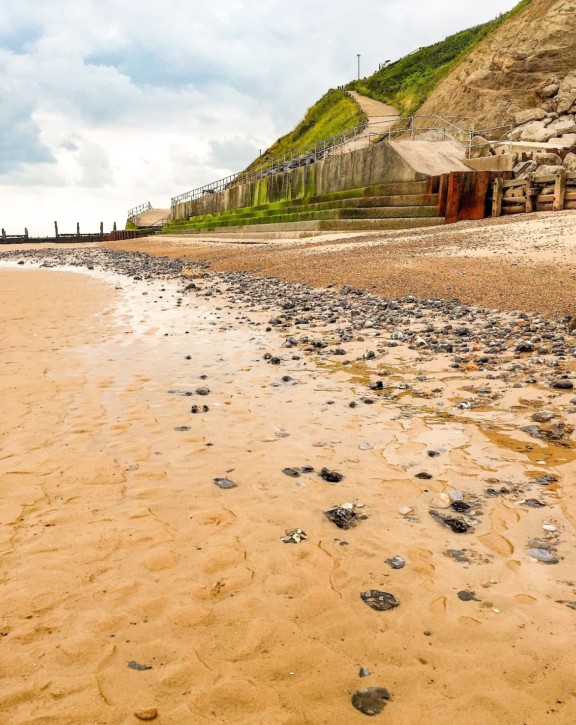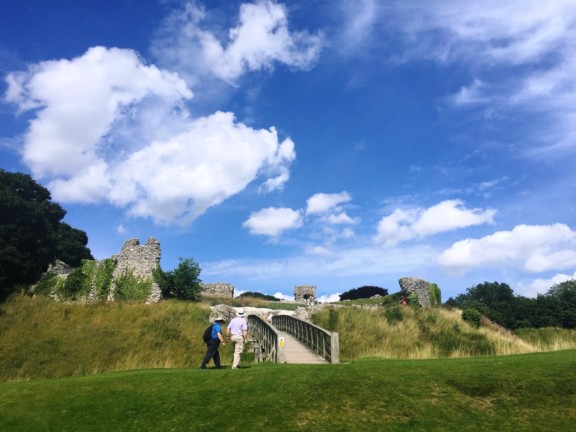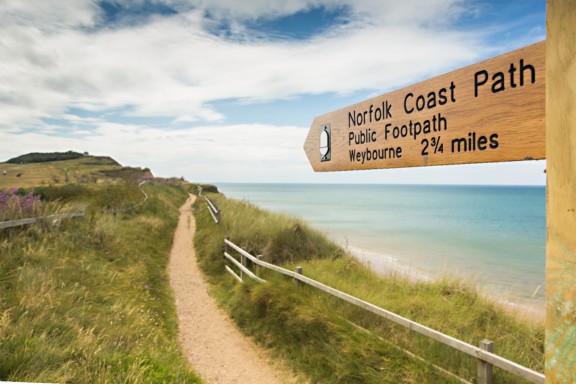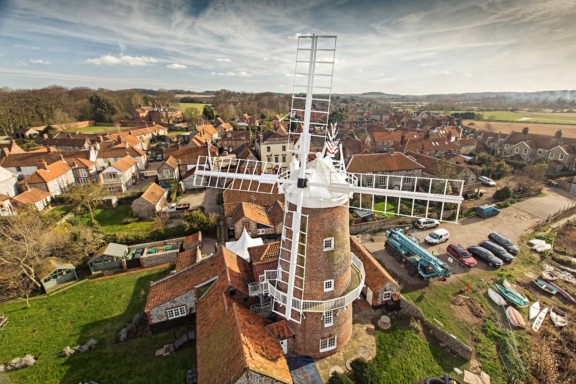Coast
Climb Cromer's cliffs and be rewarded with spectacular views of its lighthouse, pier and out to sea (top photo). Walk the cliff top coast path from Overstrand to Cromer and, if you time it right with the tide, walk back along the shore.
For a shorter variation on the same theme, park on the road at the golf course, on the eastern outskirts of town. From here, take the wide public path between the clubhouse and course, and go up to the lighthouse. In front of you is the picturesque gorse-covered 'Happy Valley' (late winter/ early spring). Also look out for tree lupins in late spring and bright orange sea buckthorn in late autumn.
Carry on and look for a set of steep wooden steps cliff-side, which take you down onto the beach (ask if you can't find them, they are a bit concealed), from where you can walk into Cromer. Enjoy taking a break to see the views while gradually ascending the slope. (Top images: Overstrand by Lesley van Dijk)





